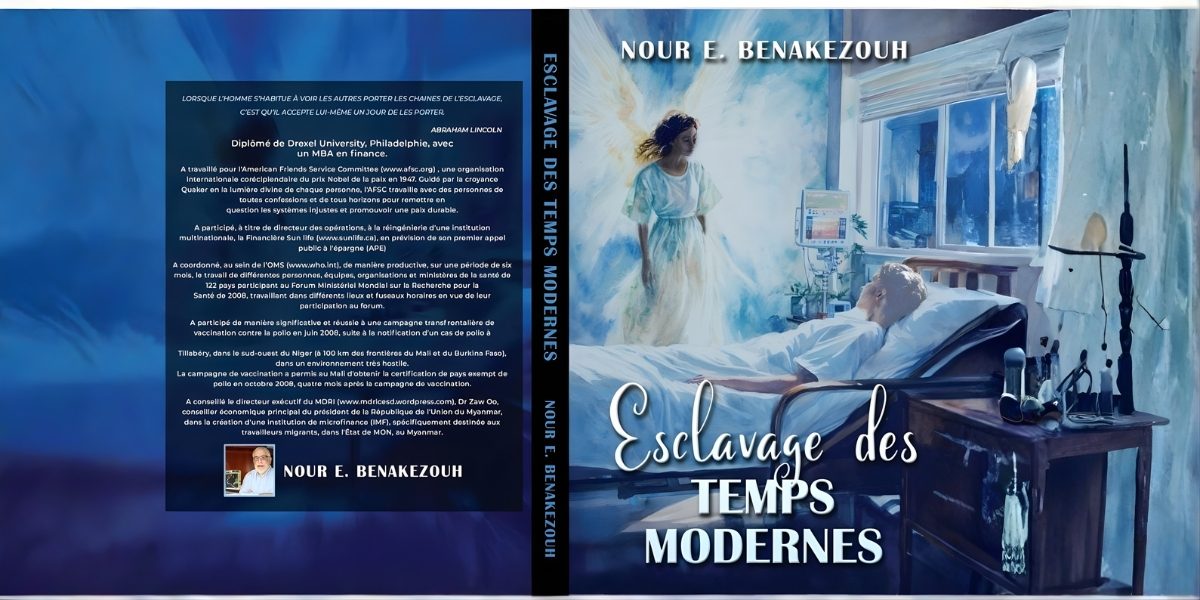All around us, stories of suffering often remain hidden. Behind the hope of a brighter tomorrow, many children and vulnerable people quietly live lives without freedom, dignity, or safety. Statistics may try to capture these realities, but numbers never carry the weight of a human life. True understanding comes through stories—moments when one person decides to act, to care, and to stand beside another.
This is the journey of Nour E. Benakezouh, whose book Modern Day Slavery shares the deep personal cost of choosing compassion over silence. His story reminds us that even the smallest act of courage can change the course of a life.
The Encounter
In 2008, Benakezouh met a young girl from Angola whose life had taken a heartbreaking turn. Her family sent her abroad with the dream of education and opportunity. Instead, she was placed in a household where her days were consumed by chores, her laughter replaced by silence, and her hopes quietly stolen.
For Benakezouh, this was not just another situation; it struck him as a father. He could not look at her without seeing his own children, free to learn, to play, and to dream. The comparison was painful. His children had choices; she had none. That realization stayed with him, pressing heavily on his heart and awakening in him an unshakable sense of duty.
The Decision to Help
Moved by empathy, he chose to step forward. He offered the girl support, guidance, and encouragement, hoping to help her reclaim what had been taken from her. But reaching out was not simple. It was met with challenges, uncertainty, and moments where it would have been easier to step back.
He sought to help her, to give her a voice, and assist her in escaping exploitation. However, he faced resistance—not just from individuals directly involved, but also institutional bureaucracy, which seemed more focused on maintaining the status quo than addressing the harm done to vulnerable individuals.
Still, he pressed on. He knew that doing nothing would only mean more silence, more pain for a child who deserved so much more. That choice to act instead of turning away became one of the defining moments of his life.
The Cost of Integrity
Standing up for what is right is rarely easy. Benakezouh soon felt the consequences of his decision ripple through his own life. His career suffered, his reputation came under strain, and peace of mind often seemed far away.
Yet even in the middle of hardship, he found strength. Every difficulty reminded him that integrity has a price, but it also has a purpose. And while others might have chosen comfort over conscience, he held firm.
His experience shows what many quietly know: when you choose kindness in the face of wrong, you may lose much, but you also gain something greater, the certainty that you did not walk away when someone needed you most.
A Promise That Lives On
Through all the struggles, one thing carried him forward: the commitment he made to the girl. Though his part in her life eventually ended, his vow remained unbroken. He would continue to speak out, to share her story, and to remind others that modern-day slavery still exists in many forms.
That commitment became a lifelong journey. It was no longer about one child, but about all children who deserve safety, dignity, and the freedom to dream.
More Than One Story
The young girl’s experience is painful, but it is not unique. Across the world, children are led away from their homes with the promise of opportunity, only to find themselves trapped in work, fear, and silence. Behind every case is a child who once dreamed of a better tomorrow.
Benakezouh’s book is not about statistics or theories. It is about faces, voices, and the hearts of those who are too often unseen. By sharing his journey, he asks us to look closer, to recognize that these struggles are not distant; they are real, and they happen far more often than many realize.
A Light of Hope
Modern Day Slavery is a story of pain, but it is also a story of hope. It is about the courage to act with compassion, even when the cost is high. It calls us to notice the forgotten, to listen to the silenced, and to understand that even the smallest acts of kindness can ripple outward in ways we may never fully see.
Courage, after all, is not always loud. Sometimes it is found in the quiet act of keeping a commitment, of standing beside another human being, of refusing to turn away.
Though Benakezouh’s path has been marked with loss, it has also been shaped by resilience. His journey shows that one person’s decision to help can inspire many others to see differently, and perhaps to act themselves.
A Lasting Message
In the end, his story is not about recognition or titles. It is about compassion that does not give up. It is a reminder that real strength is found not in avoiding hardship, but in holding on to what is right even when the world looks away.
Modern Day Slavery is both a personal testimony and an invitation. It invites each of us to reflect on how we respond to the suffering we encounter, and to ask ourselves if we too can choose courage over silence.
Above all, it leaves us with hope that a better world is possible, where no child is trapped by exploitation, and where every action made in kindness helps to build a life of freedom and dignity.
Disclaimer: The views and opinions expressed in this article are those of the author and do not necessarily reflect the official policy or position of any organization or institution mentioned. The content provided is for informational purposes only. The stories shared are based on personal experiences and are not intended to offer legal, medical, or professional advice. The author does not claim to provide a comprehensive overview of the issue of modern-day slavery, and the article should not be considered as a guarantee of outcomes for individuals in similar situations.

















